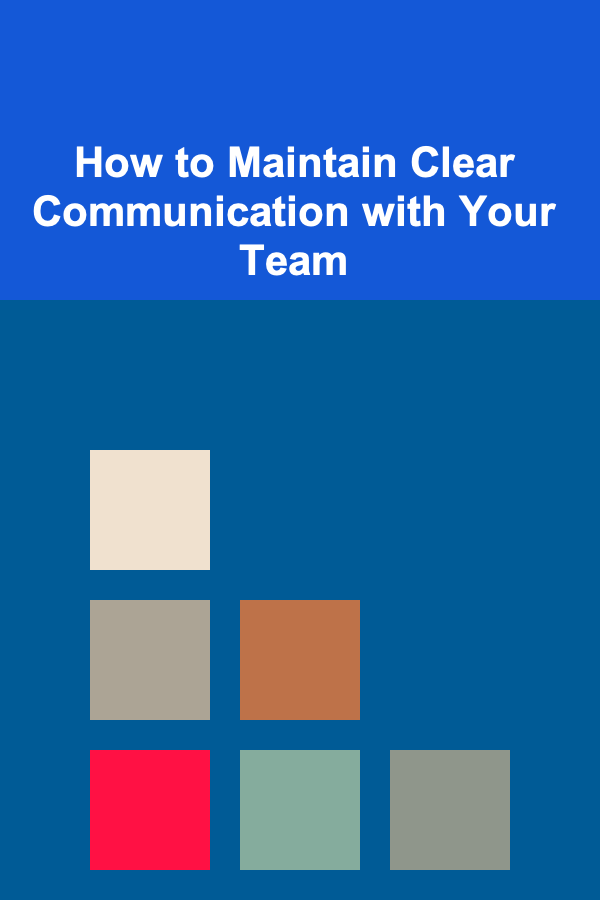
Understanding the Role of Intellectual Property in Print-on-Demand
ebook include PDF & Audio bundle (Micro Guide)
$12.99$9.99
Limited Time Offer! Order within the next:

Print-on-Demand (POD) has revolutionized the creative and entrepreneurial landscape, offering a low-risk entry point for artists, designers, and small businesses to create and sell custom products without holding inventory. However, the accessibility and ease of use of POD platforms also bring significant intellectual property (IP) considerations to the forefront. Understanding and navigating these considerations is crucial for both creators and consumers to avoid legal pitfalls, protect their rights, and foster a fair and sustainable POD ecosystem.
What is Intellectual Property?
Intellectual property refers to creations of the mind, such as inventions; literary and artistic works; designs; and symbols, names, and images used in commerce. It is protected in law by, for example, patents, copyright and trademarks, which enable people to earn recognition or financial benefit from what they invent or create. By striking the right balance between the interests of innovators and the wider public interest, the IP system aims to foster an environment in which creativity and innovation can flourish.
The main types of IP relevant to POD are:
- Copyright: Protects original works of authorship, including literary, dramatic, musical, and certain other intellectual works. This covers things like artwork, designs, written text, and photographs.
- Trademark: A symbol, design, or phrase legally registered to represent a company or product. It distinguishes goods and services of one party from those of others. Think of logos, brand names, and slogans.
- Patent: Protects inventions. While less common in the typical POD space, it could apply to unique product designs or innovative printing techniques.
- Design Patents: Protects the ornamental design of a functional item. This could be relevant to the specific shape or appearance of a POD product (e.g., a unique mug design).
Why is IP Important in Print-on-Demand?
The very nature of POD -- readily reproducing designs on demand -- makes it particularly vulnerable to IP infringement. Without a solid understanding of IP rights and responsibilities, creators can inadvertently infringe on existing rights, or have their own original work stolen and sold by others. This can lead to legal battles, financial losses, and damage to reputation.
For POD sellers, protecting their IP is essential for:
- Establishing a Brand: Trademarks protect brand identity, enabling customers to easily recognize and trust your products.
- Generating Revenue: Copyright protection ensures that you, and only you (or those you license the rights to), can profit from your original designs.
- Building a Competitive Advantage: Unique designs and branding, protected by IP, set you apart from competitors.
For consumers, understanding IP helps them:
- Support Original Creators: By purchasing products that respect IP, consumers contribute to a system that rewards creativity.
- Avoid Supporting Counterfeit Goods: Understanding trademarks can help identify unauthorized or fake products.
- Make Informed Purchasing Decisions: Knowing the origin and authenticity of a design can influence buying choices.
Copyright in Print-on-Demand: A Deep Dive
Copyright is perhaps the most critical type of IP to understand in the context of POD. It protects the original expression of an idea, not the idea itself. This means that while you can't copyright the idea of a "beach scene," you can copyright the specific artistic rendition of a beach scene you create, whether it's a painting, photograph, or digital illustration.
What Does Copyright Protect in POD?
- Original Artwork: Paintings, drawings, illustrations, digital designs, etc.
- Photographs: Original photos taken by you.
- Written Content: Text on t-shirts, mugs, posters, etc. (e.g., quotes, slogans, poems).
- Graphic Designs: Logos, patterns, and other visual elements.
- The Arrangement and Selection of Elements: Even if individual elements are not copyrightable (e.g., public domain clip art), the specific way you arrange and combine them into a new design can be protected by copyright, if it demonstrates originality.
What Doesn't Copyright Protect in POD?
- Ideas: As mentioned earlier, copyright protects the expression of an idea, not the idea itself. Someone else can create their own beach scene, as long as it's not a direct copy of your specific artwork.
- Facts: Copyright doesn't protect factual information.
- Common Shapes and Designs: Simple geometric shapes or common design elements are generally not copyrightable.
- Names and Titles (Generally): While copyright can protect creative titles (e.g., the title of a book), it generally doesn't protect simple names or phrases (which are better protected by trademark).
- Works in the Public Domain: Works that are no longer protected by copyright (either because the copyright has expired or because the work was never eligible for copyright protection) are in the public domain and can be used freely.
Copyright and POD: Best Practices
- Create Original Designs: This is the simplest and most effective way to avoid copyright infringement. Focus on your own creativity and develop unique designs.
- Obtain Permission: If you want to use someone else's copyrighted work, obtain explicit permission from the copyright holder. This often involves licensing agreements and paying royalties.
- Understand Fair Use: Fair use is a legal doctrine that allows limited use of copyrighted material without permission for purposes such as criticism, commentary, news reporting, teaching, scholarship, and research. However, fair use is a complex and fact-specific analysis, and it's risky to rely on it without legal advice. Selling POD products is generally not considered fair use.
- Use Public Domain Resources Carefully: While public domain works are free to use, verify their public domain status thoroughly. Some resources may claim to be public domain but are actually still under copyright. Also, be aware that even using public domain elements, if your arrangement and selection of those elements is original, that new arrangement can be protected by copyright.
- Keep Records: Maintain records of the source of your design elements, any licenses you've obtained, and the creation process of your original designs. This documentation can be crucial if you face a copyright claim.
- Monitor Your Store: Regularly review the designs on your POD store to ensure that you're not inadvertently infringing on someone else's copyright. Act quickly to remove any infringing content if you're notified of a violation.
- Understand POD Platform Policies: Familiarize yourself with the IP policies of the POD platforms you use. They often have mechanisms for reporting copyright infringement and may remove infringing content.
Example Scenario: Copyright Infringement
Imagine you find a popular image of a Disney character online and decide to put it on a t-shirt and sell it through your POD store. This is almost certainly copyright infringement. Disney owns the copyright to its characters, and selling unauthorized merchandise infringes on their exclusive rights. You could face legal action from Disney, including a cease and desist letter, a lawsuit for damages, and the removal of your products from the POD platform.
Trademark in Print-on-Demand: Protecting Your Brand
Trademarks are crucial for building brand recognition and preventing others from using your name, logo, or slogans in a way that could confuse customers. In the POD world, trademarks protect your brand identity and differentiate your products from those of your competitors.
What Does Trademark Protect in POD?
- Brand Names: The name you use to identify your POD store or product line (e.g., "Awesome Designs").
- Logos: The visual symbol that represents your brand.
- Slogans: Catchy phrases that are associated with your brand (e.g., "Designs That Make You Smile").
- Other Distinguishing Marks: Colors, sounds, or even smells that are uniquely associated with your brand (although these are less common in POD).
What Doesn't Trademark Protect in POD?
- Generic Terms: Words that are commonly used to describe a product or service (e.g., "t-shirt," "mug").
- Descriptive Terms (Without Secondary Meaning): Words that directly describe the characteristics of your product or service (e.g., "high-quality prints"). However, descriptive terms can acquire trademark protection if they develop "secondary meaning" -- meaning that consumers associate the term specifically with your brand over time.
- Functionality: Trademark law cannot be used to protect the functional aspects of a product (that's what patents are for).
Trademark and POD: Best Practices
- Conduct a Trademark Search: Before choosing a brand name, logo, or slogan, conduct a thorough trademark search to ensure that it's not already in use by someone else in a similar industry. The USPTO website (for the United States) is a good starting point.
- Register Your Trademark: Registering your trademark with the relevant government agency (e.g., the USPTO in the United States) provides you with legal protection against infringement and gives you the exclusive right to use your mark in connection with your goods and services.
- Monitor for Infringement: Regularly monitor the marketplace for potential trademark infringement. Use online tools and search engines to look for unauthorized use of your brand name, logo, or slogans.
- Enforce Your Trademark Rights: If you discover trademark infringement, take action to enforce your rights. This may involve sending a cease and desist letter, filing a lawsuit, or reporting the infringement to the POD platform.
- Avoid Using Third-Party Trademarks Without Permission: Never use someone else's trademark on your POD products without their explicit permission. This includes using brand names, logos, or slogans in your designs, even if you believe it's for parody or commentary.
Example Scenario: Trademark Infringement
Let's say you create a t-shirt design that incorporates the Nike "swoosh" logo without Nike's permission. This is a clear case of trademark infringement. Nike owns the trademark to its logo, and using it without authorization violates their exclusive rights. Nike could sue you for damages and have your products removed from the POD platform.
Another example: You create a POD store and name it "Addidas Prints" (with two 'd's). Even though it's not exactly the same as "Adidas," it's close enough that consumers could easily be confused. Adidas could sue you for trademark infringement because your name is likely to cause confusion in the marketplace.
The Role of POD Platforms in IP Protection
Print-on-demand platforms play a crucial role in IP protection. Most platforms have policies in place to address copyright and trademark infringement, including:
- User Agreements: These agreements typically prohibit users from uploading and selling content that infringes on the IP rights of others.
- Notice and Takedown Procedures: These procedures allow IP owners to report alleged infringements to the platform. The platform will then investigate the claim and, if it's found to be valid, remove the infringing content.
- Automated Content Screening: Some platforms use automated tools to scan uploaded designs for potential trademark or copyright violations. This helps to proactively prevent infringement.
However, POD platforms are not perfect IP enforcers. They rely heavily on IP owners to report infringement. It's up to the IP owner to actively monitor the platforms and file takedown requests when necessary.
What to Do if You Find Your Work Infringing on a POD Platform
- Document the Infringement: Take screenshots of the infringing product listing and save any relevant information, such as the seller's name and the URL of the listing.
- Contact the POD Platform: File a notice of infringement with the POD platform, following their specific procedures. Provide as much detail as possible about the infringement, including evidence of your IP ownership (e.g., copyright registration certificate, trademark registration certificate).
- Consider Sending a Cease and Desist Letter: If the platform doesn't respond promptly or adequately, consider sending a cease and desist letter to the infringer directly. This letter should demand that they remove the infringing content and stop using your IP. It's advisable to have an attorney draft this letter.
- Consult with an Attorney: If the infringement is significant or the infringer is uncooperative, consult with an attorney specializing in intellectual property law. They can advise you on your legal options and represent you in court if necessary.
Design Patents and POD
While less frequently relevant than copyright or trademark, design patents can play a role in POD, particularly for unique product shapes or ornamental designs. A design patent protects the way an article looks. Unlike utility patents, which protect how an invention works, a design patent focuses solely on the aesthetic appearance.
How Design Patents Apply to POD
- Unique Mug Shapes: If you design a mug with a truly distinctive and novel shape, you might be able to obtain a design patent.
- Ornamental Patterns on Products: A unique and non-functional pattern permanently affixed to a product (like a t-shirt or phone case) could be eligible. The key is that the pattern contributes to the aesthetic appearance and isn't purely functional.
- Novelty Item Shapes: Think creatively-shaped stress balls, keychains, or other items that go beyond simple geometric forms.
Key Considerations for Design Patents in POD
- Non-Functionality: The design must be primarily ornamental. If the shape or pattern has a functional purpose, it's likely ineligible for a design patent.
- Novelty and Non-Obviousness: The design must be new and not an obvious variation of existing designs. A patent search is crucial before applying.
- Cost and Time: Obtaining a design patent is less expensive and time-consuming than a utility patent, but it still involves legal fees and the application process.
- Enforcement: Enforcing a design patent requires monitoring the market and taking legal action against infringers, which can be costly.
The Importance of Due Diligence: Protecting Yourself as a POD Seller
Due diligence is the process of taking reasonable steps to ensure that you are not infringing on the IP rights of others. It's an essential part of running a successful and legally compliant POD business.
Key Steps in Due Diligence
- Research Your Designs: Before uploading a design to a POD platform, conduct a thorough search to ensure that it doesn't infringe on any existing copyrights, trademarks, or design patents.
- Use Reputable Resources: Obtain design elements from reputable sources that provide clear licensing terms. Avoid downloading images or graphics from unknown websites without verifying their copyright status.
- Keep Records of Your Sources: Maintain detailed records of the source of all your design elements, including licenses and usage rights.
- Consult with an Attorney: If you're unsure about the IP status of a design, consult with an attorney specializing in intellectual property law.
- Stay Informed: Stay up-to-date on IP law and best practices. The legal landscape is constantly evolving, so it's important to stay informed about the latest developments.
Conclusion
Intellectual property is a critical aspect of the print-on-demand industry. Understanding and respecting IP rights is essential for both creators and consumers to avoid legal problems, protect their brands, and foster a fair and sustainable POD ecosystem. By taking proactive steps to protect their own IP and avoid infringing on the IP rights of others, POD sellers can build successful and legally compliant businesses. From creating original designs and conducting thorough trademark searches to understanding fair use and monitoring for infringement, a commitment to intellectual property protection is not just a legal requirement but a cornerstone of ethical and responsible business practices in the dynamic world of print-on-demand.
Reading More From Our Other Websites
- [Reading Habit Tip 101] Unlocking Minds: How Reading Boosts Cognitive Skills
- [Gardening 101] From Coffee Grounds to Cocoa Pods: Creative Kitchen‑Waste Mulches
- [Home Renovating 101] How to Design a Modern Staircase That Elevates Your Home's Aesthetic
- [Home Soundproofing 101] How to Prevent Echoes in Your Home with Soundproofing Tips
- [Reading Habit Tip 101] Simple Tricks to Turn Reading into a Daily Ritual
- [Organization Tip 101] How to Make the Transition to a Zero-Based Budget
- [Organization Tip 101] How to Create a Vintage Scrapbook for Keepsakes
- [Polymer Clay Modeling Tip 101] How to Turn Your Polymer Clay into Artisan-Style Pasta: A Beginner's Guide
- [Home Pet Care 101] How to Make Your Home Cozy for Senior Pets
- [Home Rental Property 101] How to Advocate for Better Pet Amenities in Your Apartment Building

How to Maintain Clear Communication with Your Team
Read More
How to Maximize Closet Storage Without Overcrowding
Read More
How to Use an Integrated Development Environment (IDE)
Read More
How to Meditate for Deeper Spiritual Connection
Read More
How To Grow Fresh Mushrooms at Home
Read More
How to Build a Pre-Publishing Checklist for Bloggers
Read MoreOther Products

How to Maintain Clear Communication with Your Team
Read More
How to Maximize Closet Storage Without Overcrowding
Read More
How to Use an Integrated Development Environment (IDE)
Read More
How to Meditate for Deeper Spiritual Connection
Read More
How To Grow Fresh Mushrooms at Home
Read More